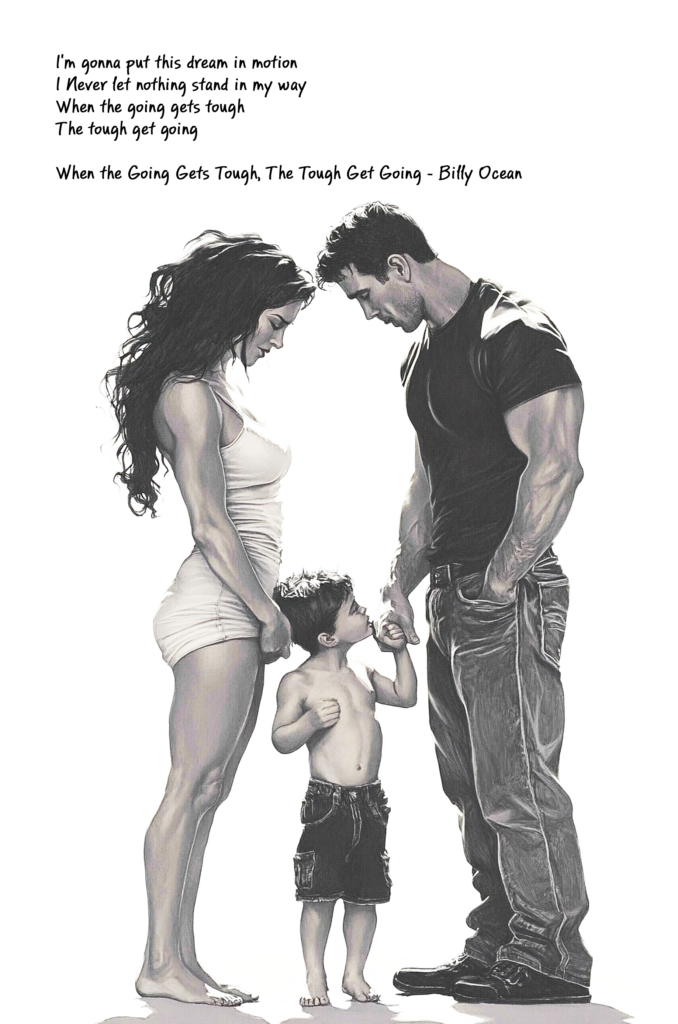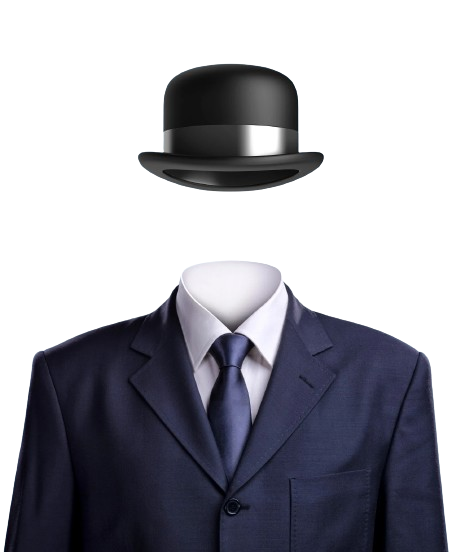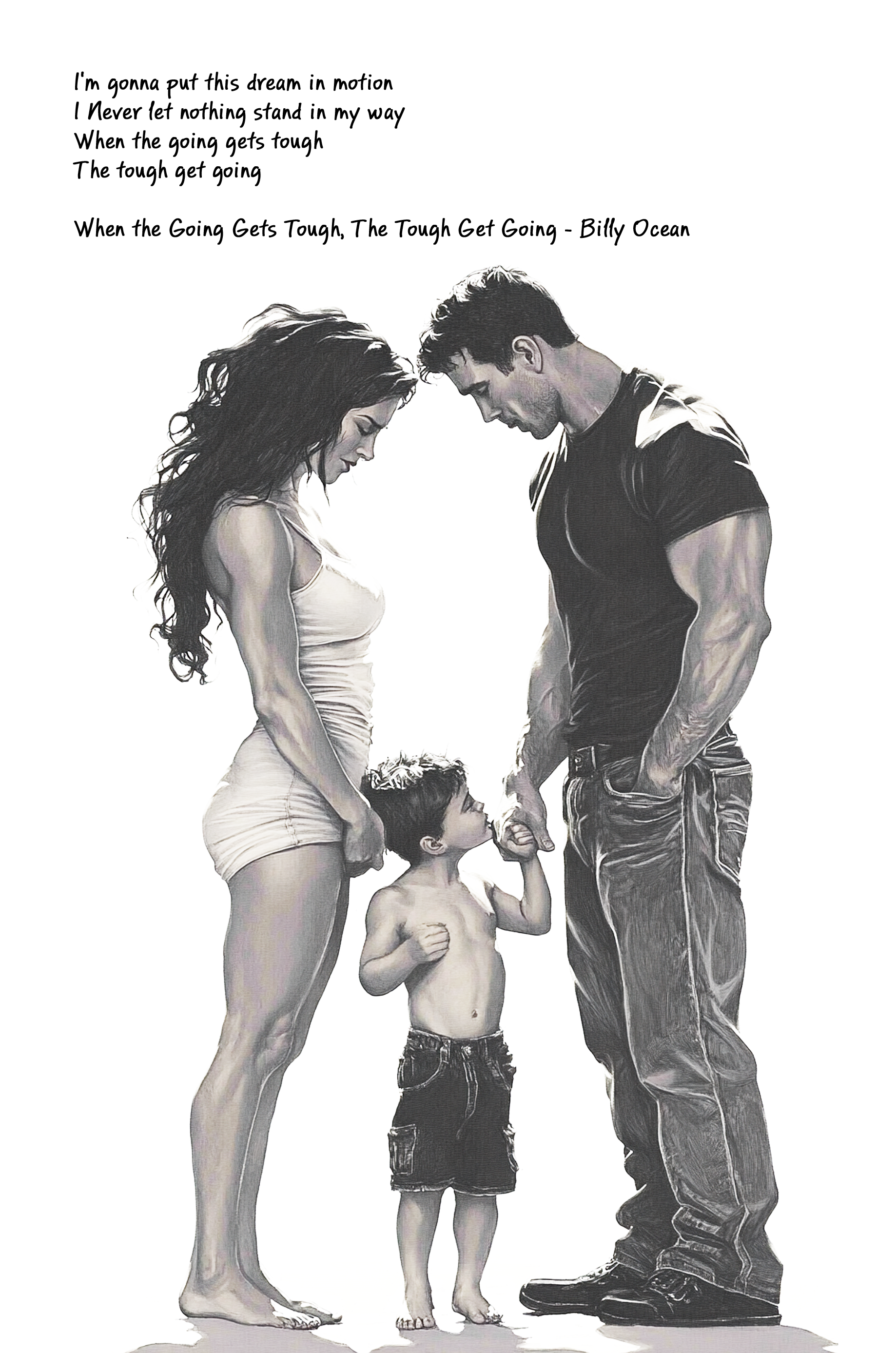
Effort without Results
After the roller coaster of emotions—the anger, the jealousy, the sadness—I found myself standing at a crossroads. I wasn’t ready to simply accept that my son would always be autistic. Not yet. Instead, I tightened my grip and started searching for a way out. A cure. A solution. Something that would make this all go away.
If you’re reading this, maybe you’re at this stage now. Perhaps you’ve acknowledged your child’s condition, but deep down, you still believe there’s a way to fix it. I understand that feeling completely.
The Quest Begins
When I finally accepted that my son was autistic, I immediately added a “but” to the end of that thought. Yes, he’s autistic, but it doesn’t have to be permanent. Yes, he’s struggling now, but we can overcome this. The journey to acceptance isn’t a straight line. It’s full of attractive side roads and tempting detours, and honestly, exploring these paths is part of the process. Like most people, I wasn’t willing to accept what I viewed as “bad” until I had exhausted every other possibility first.
What I didn’t consider—what never even occurred to me in those early days—was to question whether what I thought was “bad” really was bad at all. Maybe, just maybe, my son’s autism wasn’t a tragedy to overcome but simply a different way of experiencing the world. Perhaps reading this book will save you years of lost time and money chasing after solutions that won’t lead you where you think you want to go.

Temporary, Not Permanent
“My son is autistic, but it’s not forever.”
This became my mantra, my lifeline. It’s probably the most common form of denial among parents of children with special needs—we acknowledge the diagnosis, but we reject the permanence. It’s like the first rest stop on the long swim across an ocean of sadness.
What makes this stage so seductive is that for some families, it actually turns out to be true. Some children do overcome significant challenges or outgrow certain diagnoses. These success stories get passed around like precious gems, reinforcing the denial among the vast majority of us for whom that outcome isn’t going to happen.
This was, for me, the most natural and longest-lasting stage of grief. I envisioned this quest for a cure as the endgame—the final chapter of our story. I saw myself as the hero, the savior who would never surrender.
“I will never give up fighting for my child.”
“I will search as long as it takes to find a cure.”
I truly believed that if I just persisted long enough, fought hard enough, my child would eventually be “normal.” There are entire support groups built around sustaining this form of denial. We tell ourselves we’re being strong, being advocates. We don’t realize that our resistance doesn’t change reality—it just prolongs our suffering.
I even took pride in that suffering. I wore it like a badge of courage that proved my resolve and perseverance. This fed my delusions of nobility and strength. In reality, I was an ignorant fool who believed his own arrogant narrative. And none of it benefited my son.
Stories of Hope and Recovery
I devoured books about autism. I sought out the stories of children who had “recovered” or “overcome” autism. Most autism books fall into this category, and I read many of them. Maybe you picked up this book expecting the same thing—a roadmap to making your child “normal.” These stories feel good in the moment. They keep hope alive. But they also sustain an unproductive and unhealthy denial that can keep us stuck for years.
I often wonder: Why aren’t there more books that celebrate a special child’s uniqueness instead of treating it as a problem to solve? These books are exceedingly rare. If they were more common, I probably wouldn’t have felt the need to write this one.
The pitfalls of immersing yourself in recovery stories are many. First and most importantly, for most conditions like autism, there simply is no cure. These stories reinforce our denial and sentence us to sustained misery as we wait for a breakthrough that may never come. They can turn us into overzealous advocates who “fight like hell” on a “cure or bust” mission that ultimately exhausts everyone involved.
Finding Others Like Us
Support groups can be incredibly helpful. They’re a valuable source of information and practical advice from people who have walked in your shoes. There’s real comfort in sharing experiences with others who truly understand your daily struggles in a way that friends and family simply cannot.
However, since most people in these groups are in various stages of denial themselves, much of the support is geared toward sustaining that denial rather than moving through it.
My wife and I didn’t spend much time with support groups. Being introverts, we didn’t crave the social contact. And being realistic (or perhaps just less optimistic than others), I grew weary of the denial that permeated these meetings and the unspoken rule that I needed to stay silent to avoid upsetting people with my growing skepticism.
Chasing the Cure
Like most people, when I acknowledged that I had a problem, my instinct was to solve it. This is where the energy of angry determination often gets directed—into research, treatments, therapies, and potential cures.
Most parents do exactly what I did: research everything written about your child’s condition. Read every article, every study, every blog post. To the degree that your actions actually help your child, they’re good and necessary. But to the degree that they support your denial, they’re counterproductive. The tricky part is figuring out which is which.
I wasn’t just interested in treatment; I wanted a cure. I wasn’t interested in being realistic with my expectations. I chased unicorns, and I felt seduced by treatments that promised the moon and delivered nothing. Fortunately, I didn’t allow my wishful thinking to waste too much money on worthless interventions—though I came dangerously close more than once.
My Broken Child
During this phase, I saw my son as broken. I believed something was wrong—terribly, fundamentally wrong—and it needed to be fixed. I asked therapists and doctors to help him “catch up” to his peers. I was crushed by evaluations that placed him in the 0.01 percentile. I’d stare at those numbers and think, “This is not what I wanted. This is not the life I planned.”
Most people believe the journey to acceptance ends here, at this depressing dead end of realizing there might not be a cure. What I didn’t see then was that there was a silver lining waiting just beyond this difficult realization.
Anger as Fuel
Back then, I believed that anger served a useful purpose. The fire of anger, I thought, could drive a powerful engine of determination. It’s a compelling narrative, and it carries a kernel of truth. However, I’ve learned through hard experience that sustained anger is incredibly harmful. Any benefit you might get from keeping it alive simply isn’t worth the price you pay. Determination sustained by anger is really just another form of denial. While it might temporarily comfort you, it’s emotionally disturbing and draining over time, and it was harmful to my physical and mental health.
I channeled my anger into a determination to find the best possible treatment for my son—a cure, if one existed. I felt noble in my quest. I was Perceval searching for the Holy Grail, that legendary cup with healing powers. Unfortunately, Perceval was a fool, and so was I.
I had formed some hidden beliefs that served to sustain my anger and hinder my personal growth for many years:
First, I believed my child was broken and needed to be fixed. This implied he wasn’t acceptable just as he was. He needed to change to be worthy of love and acceptance.
Second, I believed I had the power, the intellect, and the drive to find a treatment that would make him better. This was a complete delusion based on ego, pride, and wishful thinking. Deep down, I knew there was no cure, but I searched anyway. I was hunting unicorns, searching for the Holy Grail—pick your metaphor.
Third, I believed this was not what I wanted, and I would never be happy as long as my son was autistic. This was perhaps the most debilitating delusion of all. It was rooted in my dreams of a perfect family life—dreams that included an implicit belief that I deserved that life, and only that life would be acceptable. It was a deep sense of entitlement, the opposite of thankfulness, and the destroyer of gratitude. It prevented me from appreciating my son’s unique personality, his sense of humor, his deep love for me, or any of the good he brought to my life.
These beliefs and other similar false ideas became the bars on the cage I built in my mind—a cage I struggled to escape for the better part of 15 years.
The Danger of “Doing Your Research”
When I tell people I “did my research” on autism, what I really mean is I found trusted resources and accepted them uncritically—especially when they said what I wanted to hear. People (including me) accept nonsense they want to believe as truth.
We often don’t understand the science and prefer compelling anecdotes to dry statistics. We get bogged down in medical jargon and come away thinking we know more than we actually do.
Understanding scientific efficacy is hard. Most of us become concerned our child may be autistic when they show developmental delays. Once this delay is documented, there are three possible outcomes:
- The child improves and catches up to peers
- The child remains delayed and has lifelong limitations
- The child improves in some areas or for some time, but eventually development stops progressing or worsens
Each potential outcome has a certain percentage of children associated with it. A treatment is only considered effective if more children show better outcomes than those receiving no treatment at all. So far, almost no treatment for autism has shown any real efficacy at all.
The biggest problem is confusing correlation with causation. Some children with developmental delays spontaneously improve. Some spontaneously get worse. The cause of these changes is completely unknown. However, if the change happens to coincide with some specific treatment, people naturally assume the treatment caused the change.
Take vaccines, for example. Many autistic children suddenly deteriorate at 18-24 months. This deterioration roughly corresponds to when vaccines are administered, so vaccines get blamed as the cause. But no statistical connection with vaccines has ever been established. Many autistic children deteriorated at the same age whether or not they had vaccines.
People used to blame the mercury in vaccines. But after mercury was removed from vaccines in 2004, rates of autism didn’t change at all. Yet people still consider this a cause.
The same problem happens with most unproven treatments. Some children suddenly start improving. Parents who were attempting some questionable treatment at the time assume the treatment was responsible. The stories of miraculous responses spread on social media. People mistake these anecdotes for real statistical evidence. Money gets wasted, and disappointment inevitably follows.
Snake Oil and the Cost of Hope
When a condition has no known cure, snake oil treatments multiply like weeds. They exploit a very real fear—the fear that a viable treatment might be overlooked. No parent wants to live with the guilt of not trying everything possible to help their child.
You’ve probably heard of the “Lorenzo’s Oil” syndrome, named after the movie where parents discover a treatment for their son’s rare disease when doctors couldn’t. This story, while inspiring, has convinced many parents that they must try anything and everything, no matter the cost. This is exactly how snake oil peddlers rip off good families who are already struggling.
“Every child is unique” doesn’t mean there’s a special cure out there just for your child. The rates at which children improve with these unproven treatments is exactly the same as with no treatment at all.
Some of these questionable cures are actually dangerous and should be avoided at all costs. When my son was very young, much of the hope for improvement centered on diet and nutrition.
Mineral chelation—the removal of heavy metals from the tissues—was touted as a cure for autism. This was a compelling narrative since lead poisoning shows many symptoms similar to autism. This belief also contributed to the false hysteria over mercury in vaccines.
In practice, many autistic children got sick from chelation therapies. The first rule of any treatment should be “do no harm,” and this therapy fails that test.
Even more dangerous was a trend in the late 2010s when a delusional minister promoted the idea that ingesting bleach could have a positive effect on autism. After a few children got sick, some parents were arrested, and the practice largely stopped.
In some fundamentalist religious communities, “demon exorcism” was attempted on autistic children. They started with the belief that autism was caused by demons and if these demons could be cast out, the autism would go away. No child who underwent this procedure ever showed any sign of improvement. Tragically, a few children were killed through excessive force intended to exorcise the demons, and authorities finally cracked down on the practice.
As long as there are desperate parents, there will be snake oil treatments. And as long as there are snake oil treatments, some will inevitably prove harmful. You don’t want to be the parent who hurts their helpless child with an unproven treatment.
Comfort Versus Cure
Many of these unproven treatments do provide comfort and enjoyment for children with special needs. I’m not suggesting you avoid enjoyable treatments and therapies. I’m simply suggesting you manage your expectations. For many conditions, there is no cure. And you, as a loving parent with no medical training, will not discover one on your own.
My son enjoyed many comfortable treatments over the years. We lived near a prominent equestrian therapy center for a while, and he went on a few occasions. It was a pleasant experience for him. It did nothing to cure his autism.
We once took a trip to Hawaii and stayed at a resort where my son experienced dolphins up close. They swam with him, and he touched them and fed them fish. He had a great time. It did nothing to cure his autism.
I’ve had professional masseurs come to our house to give my son a massage. He enjoyed the experience. It did nothing for his autism.
My son loves music. I listen to music with him several times per week, whenever we drive somewhere. He enjoys it immensely. It doesn’t change his condition.
And here’s the thing I eventually learned: that’s okay. It’s more than okay. These experiences weren’t failures because they didn’t cure him. They were successes because they brought him joy. And bringing joy to your child’s life—whatever form that child takes—is what parenting is really all about.


